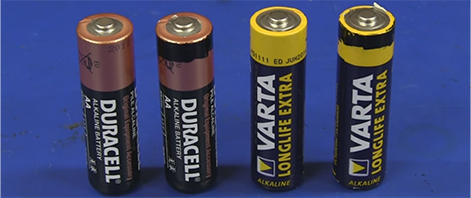For the last few years, very well-informed people have been able to tell if an alkaline battery is good or not simply by dropping them. When dropped from an inch or two above a hard surface, a good battery won’t bounce, and will sometimes land standing up. A dead battery, on the other hand, will bounce. Thanks to [Lee] and a few of his friends, we now know why this happens.
While hanging out with a few of his buddies, [Lee] was able to condense all the arguments on why dead batteries bounce to two theories. The first theory, the ‘bounce theory’ said dead batteries had an increase in outgassing in the battery, increasing the pressure in the battery, which increases the spring constant of the battery itself. The second theory, the ‘anti-bounce theory’, said the gel-like properties of the electrolyte worked as a sort of mass damper.
[Lee] designed an experiment to test the outgassing ‘bounce theory’ of bouncing batteries. Instead of dropping a battery, an object – in this case a brass slug – was dropped onto both good and bad batteries. There was no difference. Even after holes were drilled to vent any gasses inside the battery, the brass slug bounced off both good and bad batteries the same way.
This means the reason dead alkaline batteries bounce is due to the electrolyte. [Lee] cut open a few AA cells and found the electrolyte in a good battery was a mushy mess of chemicals. In the dead battery, this same electrolyte hardened into a solid mass. [Lee] compares this to an anti-bounce hammer.
Finally, more than a year after most of us learned about bouncing dead batteries thanks to [Dave Jones]’ video, we have an answer. It’s a chemical change in the electrolyte that turns it from a goo to a solid that makes dead batteries bounce.












